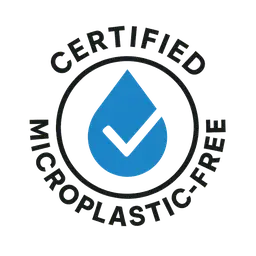
About the Standard
The criteria products must meet to earn the seal.
Scope
The standard applies to finished consumer products and their primary packaging. We focus on materials that contact the user or the contents during normal use.
Core criteria
- Materials — Components in contact with users or contents are made from non-shedding, non-plastic, or engineered alternatives that do not generate microplastics under normal use.
- Threshold — If plastics are unavoidable, documented evidence shows expected shedding is below our safe threshold for the product category.
- Chemical safety — Materials are food-contact safe where applicable and free of intentionally added microbeads and microfibers.
- Lifecycle — Normal cleaning, wear, and disposal do not introduce significant microplastic release compared with accepted alternatives.
- Labeling — Clear user guidance on care and disposal to minimize microplastic generation.
- Documentation — Bill of materials, supplier attestations, and test data where available.
We accept independent lab test reports if brands have them, but we do not require lab testing at this time.
Product categories and thresholds
We maintain risk-based thresholds by category. Initial categories include: food and beverage contact, personal care accessories, textiles and apparel, household goods, and children’s items. Category sheets explain expected materials and acceptable alternatives. Thresholds will tighten as materials improve.
Maintenance and revisions
The standard is reviewed at least annually. Certified brands are notified of changes with a reasonable transition period.